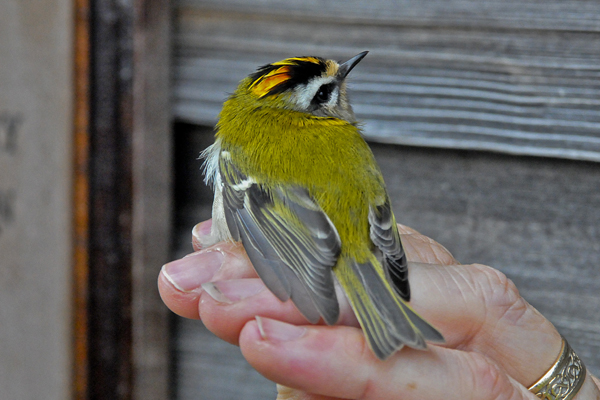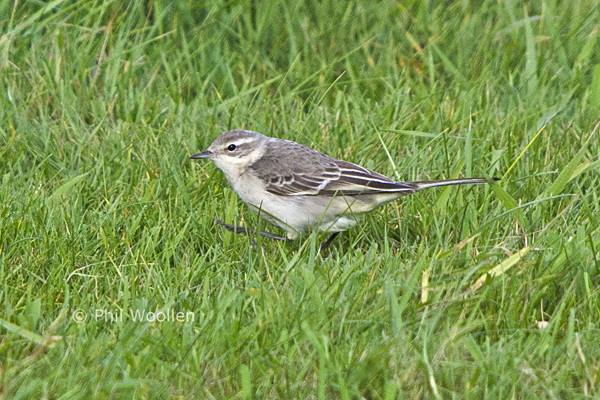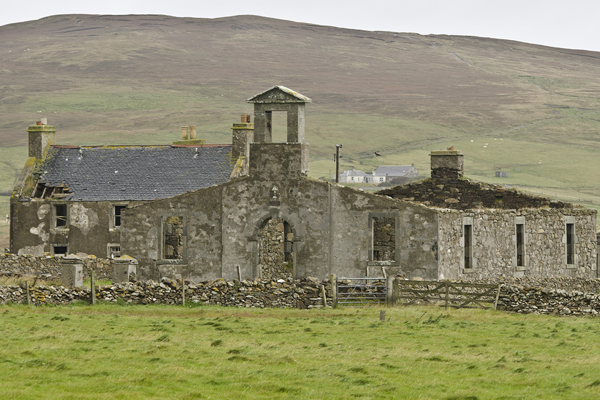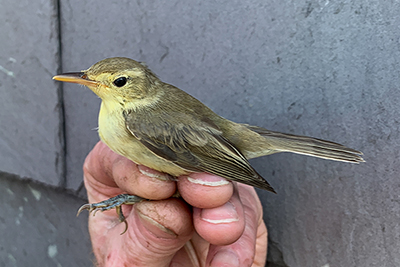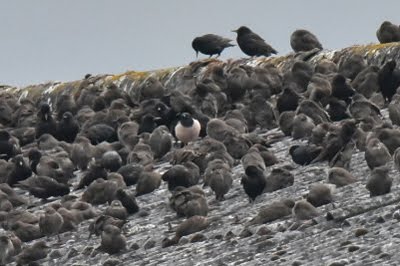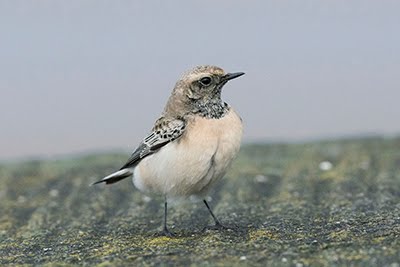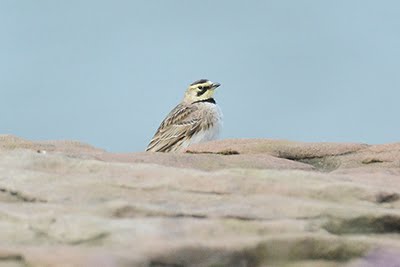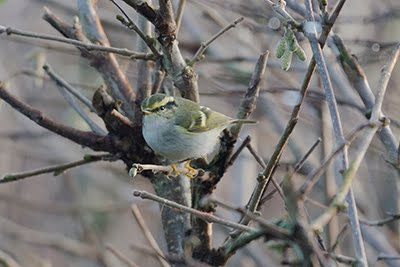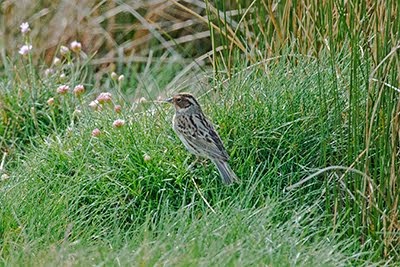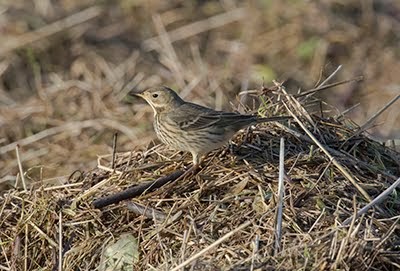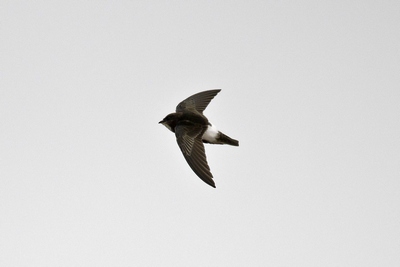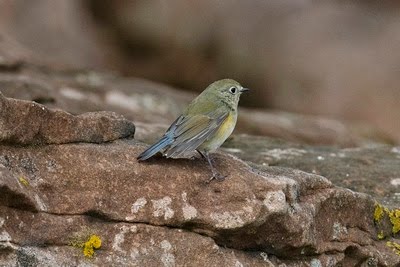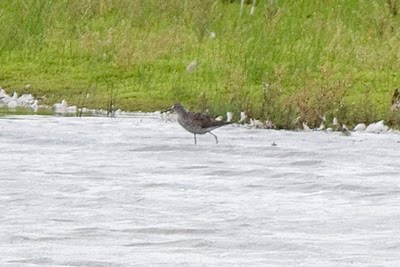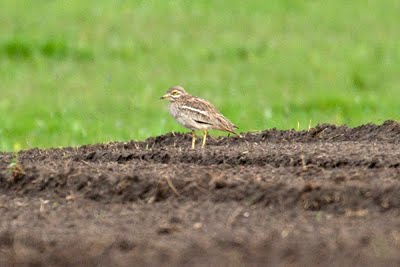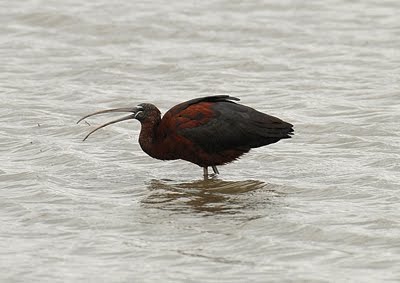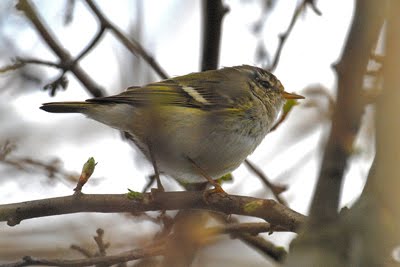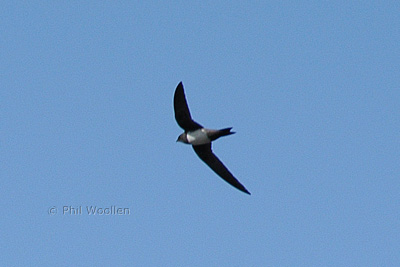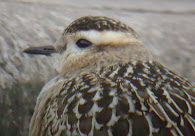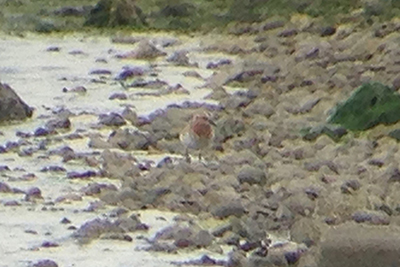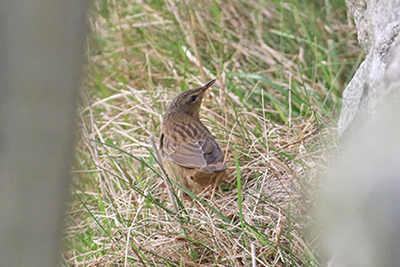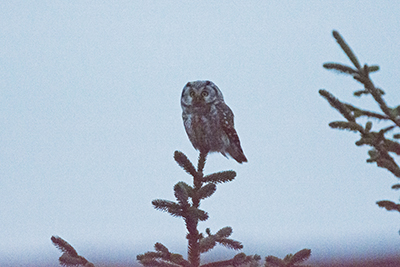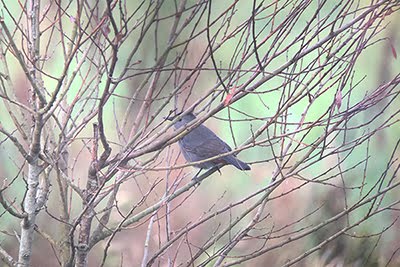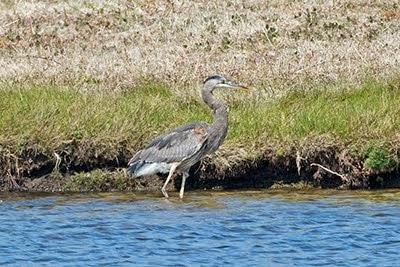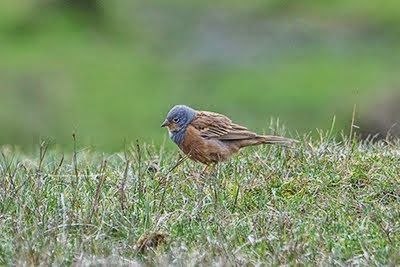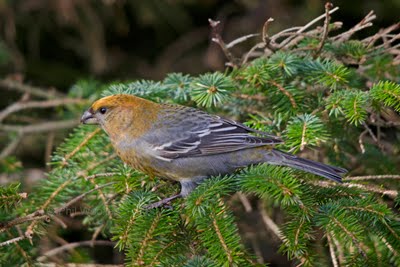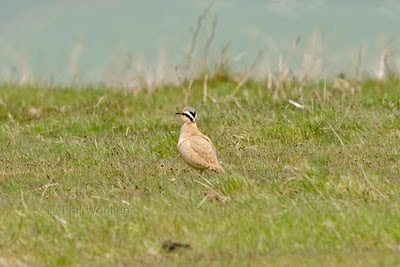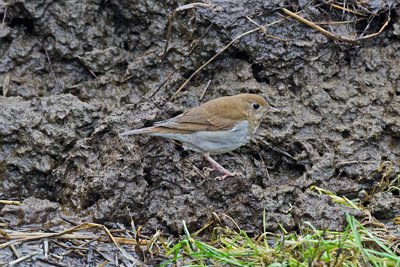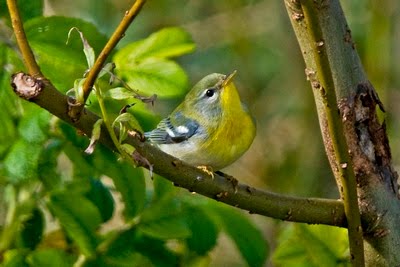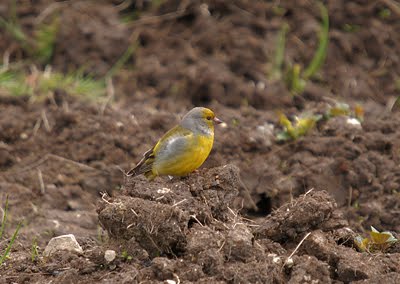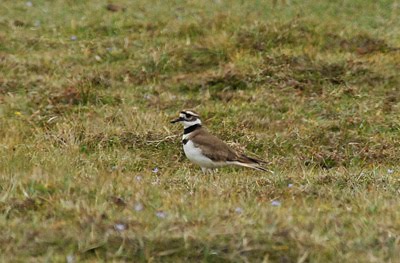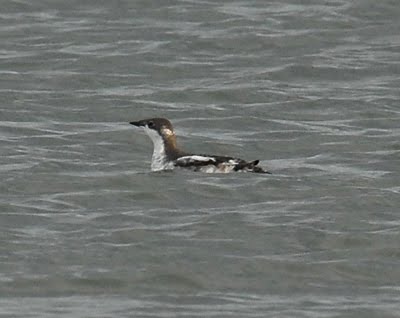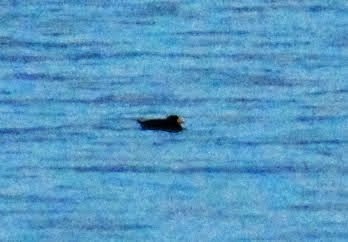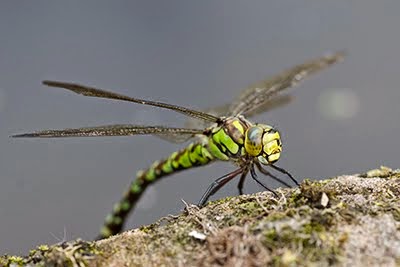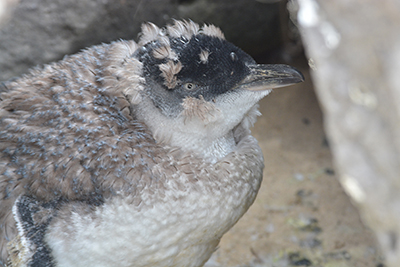Siberian Rubythroat. One of those mythical birds you dream of finding on Shetland in the Autumn. We all hope to find a 'Sibee' but the Rubythroat is the holy grail. A little gem of of a bird that all birders aspire to see at some time or other. Well one lucky guy on Shetland found one in his garden at Gulberswick. Normally they don't stay long but this one seems to have stayed and following a recent trip to Sweden I decided to go for it. Eventually there would be one on the mainland but 1000's would be going for it and where else could you see a British Rubythroat with on,y 10 other people watching!
Plans were made and I travelled in the early hours of Friday morning to catch the 09.45 from Edinburgh. Hopes were high as the S S Easterly strong winds and rain weren't really conducive for it to move off. Luckily Russ Hayward texted me before I'd got on the plane to let me know the bird was still there.
Steve Griffin introduced himself to me at the airport and we travelled together to Sumburgh where I'd arranged a hire car. Landing at 11.00 we were on site by 11.30 to find a handful of people there Unfortunately the bird hadn't been seen for 3 hours but within minutes it popped out on the to drive briefly before before chased off by the local Robins.
At times it went missing for long periods and at one point left the garden altogether. I went for a wander and it flew out of some sedge along a burn adjacent to the garden, landed on the fence, cocked its tail, peered at me over its shoulder and then disappeared back into the garden!
The weather was atrocious and photography virtually impossible. Unfortunately the only time the bird came really close (within 4 m) it was almost dark and I was already shooting on 4000 ISO and 1/60th second shutter speed!.
We left the bird at dusk and returned to the Sumburgh Hotel for a celebration meal and a few beers. Steve was leaving early in the morning & I'd arranged to pick Paul Hackett and Chris Galvin up at 07.30 off the ferry. Once again the weather was atrocious but this time I managed the requisite 'record' shots.
What a fantastic bird and many thanks to the home owner, Alan, for being so accommodating and letting birders peer in through his front gate.
Not to be outdone in the show-off stakes this Sheltand Wren posed for the camera on a nearby fence. Why couldn't the Rubythoat have been so close. Never mind - I'd realised an ambition nurtured over time, since a kid, poring over bird books and looking at the pictures of male Siberian Rubythroats and dreaming............
After spending total of 8 hrs on site over two days I was freezing cold and wet through but very happy as I returned to Sumburgh for the start of the journey home.
30 Oct 2011
23 Oct 2011
Back to earth.
After last weekends excitement it was inevitable that things would be fairly quiet this weekend. The week was frustrating in that there were two good birds nationally. A short staying Scarlet Tanager in Cornwall but even more frustratingly a long staying male Siberian Rubythroat on Shetland. The Rubythroat was tempting the longer it stayed but, due to work commitments I couldn't go and part of me reasoned that in the last five years there have been 3 records so eventually there would be a nearer one.
Anyway, back to the weekend. Expectations weren't high but I still drove over to Hilbre in the dark to be on at dawn as the high tide was really early. A single Blackbird and Robin were ringed and unbelievably Thursday's Coal Tit was still present and found to have put on weight during its stay. Even more unbelievable is the fact its still there today (Sunday).
As the early morning cloud gave way to a cloudless sky it was obvious that although there weren't many birds on the island there was plenty going on in the airspace above with a steady stream of Chaffinches, Skylarks and a Reed Bunting passing overhead. A group of Starlings dropped in for a quick rest on the radio mast before departing towards the mainland and a small part of Redwings 'tseeped' their way south. Star bird though was a Merlin that came in low from the west over the sea.
Wader numbers are building up with one of our colour ringed Turnstones making a welcome return. At least 80 of these active little waders were around the Island yesterday with Oystercatchers, Curlew, Redshank, Knot and Bar-tailed Godwits all being logged.
Another sign that the year is drawing to an inexorable close is the arrival of the Brent Geese. 39 birds have so far arrived including this family group that consisted of two adults and four juveniles (yes I can count - one of the adults is out of shot to the left).
A real surprise back home was a Little Owl that woke me up Friday night calling from our neighbours roof. I hear them distantly from the garden but have never had one so close!
Anyway, back to the weekend. Expectations weren't high but I still drove over to Hilbre in the dark to be on at dawn as the high tide was really early. A single Blackbird and Robin were ringed and unbelievably Thursday's Coal Tit was still present and found to have put on weight during its stay. Even more unbelievable is the fact its still there today (Sunday).
As the early morning cloud gave way to a cloudless sky it was obvious that although there weren't many birds on the island there was plenty going on in the airspace above with a steady stream of Chaffinches, Skylarks and a Reed Bunting passing overhead. A group of Starlings dropped in for a quick rest on the radio mast before departing towards the mainland and a small part of Redwings 'tseeped' their way south. Star bird though was a Merlin that came in low from the west over the sea.
Wader numbers are building up with one of our colour ringed Turnstones making a welcome return. At least 80 of these active little waders were around the Island yesterday with Oystercatchers, Curlew, Redshank, Knot and Bar-tailed Godwits all being logged.
Another sign that the year is drawing to an inexorable close is the arrival of the Brent Geese. 39 birds have so far arrived including this family group that consisted of two adults and four juveniles (yes I can count - one of the adults is out of shot to the left).
A real surprise back home was a Little Owl that woke me up Friday night calling from our neighbours roof. I hear them distantly from the garden but have never had one so close!
16 Oct 2011
Hilbre magic strikes again.
A magical day on Hibre started well when the first round of the traps produced the weeks second Firecrest and a 1st winter male Blackcap. Where do these Firecrests come from? They inevitably turn up alone and not with the Goldcrests as we'd expect.
Next up was a single Reed Bunting that dropped into the Obs garden before heading off to the mainland .
As the morning drizzle cleared a second Blackcap was caught and a Short-eared Owl was watched fly in off the sea.
As Steve, Colin & yours truly did another round of the traps John took a phonecall and happened to glance up and see a 'chat' fly towards the east side. Ringing Steve he suggested it was probably a RED-FLANKED BLUETAIL. Oh shit! The one bird we'd been dreaming about on Hilbre but one we thought we'd never see as they're a really rare bird on the west coast.
Splitting up we searched for the bird and suddenly there it was on the cliffs in front of me as I walked along the foreshore on the east side. F*ck me - it was a Red-flanked Bluetail. Hands shaking I tried to phone Steve and get a record shot at the same time in case the bird flew off towards the mainland before the high tide.Joining me on the foreshore the others all got good views as the bird flitted around happily feeding on the cliffs and occasionally on the beach. The Chairman arrived and the news was put out in time for a handful of local birders and a couple of nearby visitors to scrounge a lift with Jane as she drove across for this west coast 'mega'.As we watched the bird it suddenly took it into its head to land on the Blackthorn at the top of Niffy Bay - right in the entrance of the SK heligoland trap! Next minute it was in and in the bag!
Taking it back to the Obs where it was ringed and aged as a first winter bird we were able to show the handful of visitors the bird in close up before taking it back and releasing it in its favoured area. Knowing once the tide had dropped many people would want to come over and see it we kept a discrete eye on it so we could let visitors know where it was. A starving obs crew were now stranded over the tide but Doreen came up trumps - not so much the loaves and the fishes feeding the ravenous crowds but 2 sandwiches, 3 sausages, some scones and a handful of digestives shared between us.
Whilst keeping an eye on the Bluetail a Rock Pipit was seen eating a Sea Slater - something we didn't realise they are. You learn something new everyday!
This kind of day makes all the early starts and long days worthwhile for the Obs team and dreams of such events keep us going during the blank and dismal days.
Next up was a single Reed Bunting that dropped into the Obs garden before heading off to the mainland .
As the morning drizzle cleared a second Blackcap was caught and a Short-eared Owl was watched fly in off the sea.
As Steve, Colin & yours truly did another round of the traps John took a phonecall and happened to glance up and see a 'chat' fly towards the east side. Ringing Steve he suggested it was probably a RED-FLANKED BLUETAIL. Oh shit! The one bird we'd been dreaming about on Hilbre but one we thought we'd never see as they're a really rare bird on the west coast.
Splitting up we searched for the bird and suddenly there it was on the cliffs in front of me as I walked along the foreshore on the east side. F*ck me - it was a Red-flanked Bluetail. Hands shaking I tried to phone Steve and get a record shot at the same time in case the bird flew off towards the mainland before the high tide.Joining me on the foreshore the others all got good views as the bird flitted around happily feeding on the cliffs and occasionally on the beach. The Chairman arrived and the news was put out in time for a handful of local birders and a couple of nearby visitors to scrounge a lift with Jane as she drove across for this west coast 'mega'.As we watched the bird it suddenly took it into its head to land on the Blackthorn at the top of Niffy Bay - right in the entrance of the SK heligoland trap! Next minute it was in and in the bag!
Taking it back to the Obs where it was ringed and aged as a first winter bird we were able to show the handful of visitors the bird in close up before taking it back and releasing it in its favoured area. Knowing once the tide had dropped many people would want to come over and see it we kept a discrete eye on it so we could let visitors know where it was. A starving obs crew were now stranded over the tide but Doreen came up trumps - not so much the loaves and the fishes feeding the ravenous crowds but 2 sandwiches, 3 sausages, some scones and a handful of digestives shared between us.
Whilst keeping an eye on the Bluetail a Rock Pipit was seen eating a Sea Slater - something we didn't realise they are. You learn something new everyday!
This kind of day makes all the early starts and long days worthwhile for the Obs team and dreams of such events keep us going during the blank and dismal days.
12 Oct 2011
Shetland. Day 6. Hangover time.
As usual I was up early and raring to go but after the previous nights excesses some of the lads were content to stay in bed so a depleted team set off to explore a few likely looking areas in the south before heading towards Sumburgh & Quendale. The previous day Matt, Damon & Mike had found a Hawfinch and Barred Warbler in a garden adjacent to Tesco's so we started off there but there was no sign of either bird. By now the weather was really closing in and hail stones battered down.
Eventually arriving at Grutness we did a bit of a seawatch picking up Red-throated Diver and Long-tailed Duck until the weather improved enough to venture out. Whilst admiring the Shetland ponies in a nearby field the Yellow Wagtail dropped in and we watched it feeding for around 30 minutes before it headed off over the sea towards the airport.
Apart from that it was very quiet and it looked as if there had been a big clear out of commoner migrants and thrushes during the night. The results of all our efforts were a single Blackcap and not even a Yellow-browed Warbler could be found.
Quendale was getting battered by high winds and hailstones so after a fruitless search for the pipit we headed towards Geosetter. Even the Twite were sheltering in the lee of the drystone walls from the bad weather.
Luckily the weather improved at Geosetter but a thorough search of the bushes surrounding the burn revealed nothing more exciting than a single Goldcrest although the locals watched on with detached interest.
Finally calling it a day we headed back to the accommodation to get dry, warm up and pack for the flight home the next day. Another great trip. No new birds for me again this year but with 6 BBRC rarities seen exceptionally well I wasn't complaining. Until next year.......
Eventually arriving at Grutness we did a bit of a seawatch picking up Red-throated Diver and Long-tailed Duck until the weather improved enough to venture out. Whilst admiring the Shetland ponies in a nearby field the Yellow Wagtail dropped in and we watched it feeding for around 30 minutes before it headed off over the sea towards the airport.
Apart from that it was very quiet and it looked as if there had been a big clear out of commoner migrants and thrushes during the night. The results of all our efforts were a single Blackcap and not even a Yellow-browed Warbler could be found.
Quendale was getting battered by high winds and hailstones so after a fruitless search for the pipit we headed towards Geosetter. Even the Twite were sheltering in the lee of the drystone walls from the bad weather.
Luckily the weather improved at Geosetter but a thorough search of the bushes surrounding the burn revealed nothing more exciting than a single Goldcrest although the locals watched on with detached interest.
Finally calling it a day we headed back to the accommodation to get dry, warm up and pack for the flight home the next day. Another great trip. No new birds for me again this year but with 6 BBRC rarities seen exceptionally well I wasn't complaining. Until next year.......
Shetland. Day 5. Wagtails & pipits.
News that a Buf-bellied Pipit had been seen the previous day by some of the tea mwho'd elected t ostay out later rather than retrun to the apartment galvanised us into searching Quendale. For three hours we searched with the only reward being a brief Olive-backed Pipit in the company of Meadow Pipits that flew towards the quarry beofre anyt reocrd shots could be taken. A further search of the quarry revealed nothing so we left and went to Sumburgh Farm where the rest of the team had seen a possible Eastern Yellow Wagtail the day before found by Martin Garner who'd recored its call.. Sure enough we relocated the bird and noted the distinctive raspy call as it fed amongst cattle near the farm.
Once again we returned early as Big Al had a migraine and needed to rest before hitting the town on a a Saturday night. No sooner had we arrived back at the accomodation when news filtered through that the Buff-bellied Pipit had been seen again at Quendale in a Kale field above the dam. Arse. Having only seen one before I was keen to catch up with this bird - especially as we'd missed the bird on Shetland last year by one day! Mark & I headed down to Quendale in fading light to find Roy Hargreaves standing forlornly looking into an empty field. Deciding to check out a couple of other areas the pipit flew calling over our heads back towards the Kale field. Trudging back we located it and watched as the light faded and the bird got closer and closer......................
With the rest of the lads electing to go into Lerwick and have an Indian Matt, Mark & I ate at 'home' before catching a taxi into town where the International Fiddle Festival was in full swing. Oh dear. The Indian was forgotten as a racous crew caroused the night away. Next day there were going to be some sore heads.
Once again we returned early as Big Al had a migraine and needed to rest before hitting the town on a a Saturday night. No sooner had we arrived back at the accomodation when news filtered through that the Buff-bellied Pipit had been seen again at Quendale in a Kale field above the dam. Arse. Having only seen one before I was keen to catch up with this bird - especially as we'd missed the bird on Shetland last year by one day! Mark & I headed down to Quendale in fading light to find Roy Hargreaves standing forlornly looking into an empty field. Deciding to check out a couple of other areas the pipit flew calling over our heads back towards the Kale field. Trudging back we located it and watched as the light faded and the bird got closer and closer......................
With the rest of the lads electing to go into Lerwick and have an Indian Matt, Mark & I ate at 'home' before catching a taxi into town where the International Fiddle Festival was in full swing. Oh dear. The Indian was forgotten as a racous crew caroused the night away. Next day there were going to be some sore heads.
You can't take Utd fans anywhere without them disgacing themselves.
Shetland. Day 4. Shrikes.
After breakfast the team split up with Mark, Pod & me electing to go to Levenswick to see a juvenile Isabelline Shrike that had been frequenting a local garden. The very friendly house owner welcomed us into his garden with the news the shrike hadn't been seen! Knowing Shrikes can be late risers we gave it an hour before giving up - not before we were entertained by another two Yellow- browed Warblers though.
Unbelievably it appeared the shrike had relocated to Quendale where the other car fad just arrived. Imagjne our surprise when we arrived to find an adult female impaling it's prey on a varied wire fence. A different bird!
With Al deciding he needed his beauty treatment more than spending more time in the skin battering wind we headed back to the apartment to drop him & Mike off before the rest of us headed back to for a search for a juvenile Pallid Harriet that had been 'oiled' by a spitting Fulmar and was regularly coming into roost. Staking out Loch Hillwell and Brake it was Pod, returning on foot from Quendale Mill who found the Harrier sat on a post behind us!
Eventually everyone got good views if it perched up & in flight. Our efforts were doubly rewarded when an American Golden Plover was located with the Golden Plover flock on the opposite side of the road!
Unbelievably it appeared the shrike had relocated to Quendale where the other car fad just arrived. Imagjne our surprise when we arrived to find an adult female impaling it's prey on a varied wire fence. A different bird!
With Al deciding he needed his beauty treatment more than spending more time in the skin battering wind we headed back to the apartment to drop him & Mike off before the rest of us headed back to for a search for a juvenile Pallid Harriet that had been 'oiled' by a spitting Fulmar and was regularly coming into roost. Staking out Loch Hillwell and Brake it was Pod, returning on foot from Quendale Mill who found the Harrier sat on a post behind us!
Eventually everyone got good views if it perched up & in flight. Our efforts were doubly rewarded when an American Golden Plover was located with the Golden Plover flock on the opposite side of the road!
Shetland. Day 3. Pallid Harrier.
Once again the weather was dull and wet but we decided to concentrate our efforts into finding a Pallid Harrier for those that needed it.
First stop on the journey south though was Geosetter where we found a Little Bunting feeding alongside the road. Unfortunately a car coming down from the farm spooked it and jf flew off just as the other half of the team arrived. It soon returned though chasing two Redwings. A search of the burn revealed yet another two Y B Warblers.
With a Pallid Harrier being reported regularly from around Sandwick & Channerwick we drove to the highest point we could find at Rompa & scanned the hills. Within minutes Mark picked up a distant ring- tailed Harrier that ticked all the right boxes as far as computation & wing shape was concerned but we couldn't get the 'scope on it before if drifted over a ridge and into the next valley. Ringing the lads in the other car we headed west towards to check the hillsides there whilst they staked out our original spot.
Funding some good cover along the way we soon picked up another Y B Warbler. The other lads reported they'd seen the Harrier again so with a couple of hours daylight we returned to scan the hills from a lay-by on the A970. No sign of the Pallid but we did find a stonking adult male Hen Harrier.
Next stop was Fleck where a juvenile Citrine Wagtail showed well in poor light.
A quick search of Channerwick was rewarded with two more Yellow-broweds before we headed for Tesco's for Mark to pick up the necessary ingredients for our dinner. Chicken breasts stuffed with black kidding and wrapped in bacon, roast spuds, parsnips, carrots and broccoli washed down with a couple of beers and a malt whisky nightcap.
First stop on the journey south though was Geosetter where we found a Little Bunting feeding alongside the road. Unfortunately a car coming down from the farm spooked it and jf flew off just as the other half of the team arrived. It soon returned though chasing two Redwings. A search of the burn revealed yet another two Y B Warblers.
With a Pallid Harrier being reported regularly from around Sandwick & Channerwick we drove to the highest point we could find at Rompa & scanned the hills. Within minutes Mark picked up a distant ring- tailed Harrier that ticked all the right boxes as far as computation & wing shape was concerned but we couldn't get the 'scope on it before if drifted over a ridge and into the next valley. Ringing the lads in the other car we headed west towards to check the hillsides there whilst they staked out our original spot.
Funding some good cover along the way we soon picked up another Y B Warbler. The other lads reported they'd seen the Harrier again so with a couple of hours daylight we returned to scan the hills from a lay-by on the A970. No sign of the Pallid but we did find a stonking adult male Hen Harrier.
Next stop was Fleck where a juvenile Citrine Wagtail showed well in poor light.
A quick search of Channerwick was rewarded with two more Yellow-broweds before we headed for Tesco's for Mark to pick up the necessary ingredients for our dinner. Chicken breasts stuffed with black kidding and wrapped in bacon, roast spuds, parsnips, carrots and broccoli washed down with a couple of beers and a malt whisky nightcap.
Shetland. Day 2. Unst
Everyone was up bright and early for the trip to Unst. Bacon & egg batches fit breakfast went downmarket treat and we were on our way before it was light.
Firstly we had to get the ferry to the birdless vwastelands of Yell before driving to the northern end to get the Unst ferry.
Arriving in atrocious weather we met up with Paul & Vicky Wren who I hadn't seen since meeting on Tiree last September. The bunting was seen several times briefly in pouring rain and with the weather getting worse we decided to get a brew before heading north to ......... and the famous 'birders garden'. With B H Bunting being a lifer for four of the party we'd had a good start already.
The garden lived up to it's reputation and as well as the two reported Common Rosefinches we found a third bird. The first of many Yelkow-browed Warblers (2) and a Pied Flycatcher completed the sightings.
With rain still persistently pissing down we headed for Skaw where we found yet another Y B Warbler. An odd female Blackcap with White greater coverts on one side only caused some momentary confusion but was soon resolved.
An Olive-backed Pipit had been showing well in a marshy area adjacent to the school at Baltasound but birders were asked to stay away until the school closed at 15.35. Time for another brew and a trip to Ulyasound where yet another Yellow-browed Warbler was dismissed when we located a juvenile Barred Warbler.
With the sun breaking through at last we headed to the school where Matty first spotted the pipit on the wooden boardwalk. We watched this Siberian waif in silence down to 4 m before others joined us.
By now the weather had improved and we decided to try for better views of the bunting before heading home to dry out, get some tea, a couple of beers and an early night.
A great, albeit wet, day.
Firstly we had to get the ferry to the birdless vwastelands of Yell before driving to the northern end to get the Unst ferry.
Arriving in atrocious weather we met up with Paul & Vicky Wren who I hadn't seen since meeting on Tiree last September. The bunting was seen several times briefly in pouring rain and with the weather getting worse we decided to get a brew before heading north to ......... and the famous 'birders garden'. With B H Bunting being a lifer for four of the party we'd had a good start already.
The garden lived up to it's reputation and as well as the two reported Common Rosefinches we found a third bird. The first of many Yelkow-browed Warblers (2) and a Pied Flycatcher completed the sightings.
With rain still persistently pissing down we headed for Skaw where we found yet another Y B Warbler. An odd female Blackcap with White greater coverts on one side only caused some momentary confusion but was soon resolved.
An Olive-backed Pipit had been showing well in a marshy area adjacent to the school at Baltasound but birders were asked to stay away until the school closed at 15.35. Time for another brew and a trip to Ulyasound where yet another Yellow-browed Warbler was dismissed when we located a juvenile Barred Warbler.
With the sun breaking through at last we headed to the school where Matty first spotted the pipit on the wooden boardwalk. We watched this Siberian waif in silence down to 4 m before others joined us.
By now the weather had improved and we decided to try for better views of the bunting before heading home to dry out, get some tea, a couple of beers and an early night.
A great, albeit wet, day.
Subscribe to:
Posts
(
Atom
)










